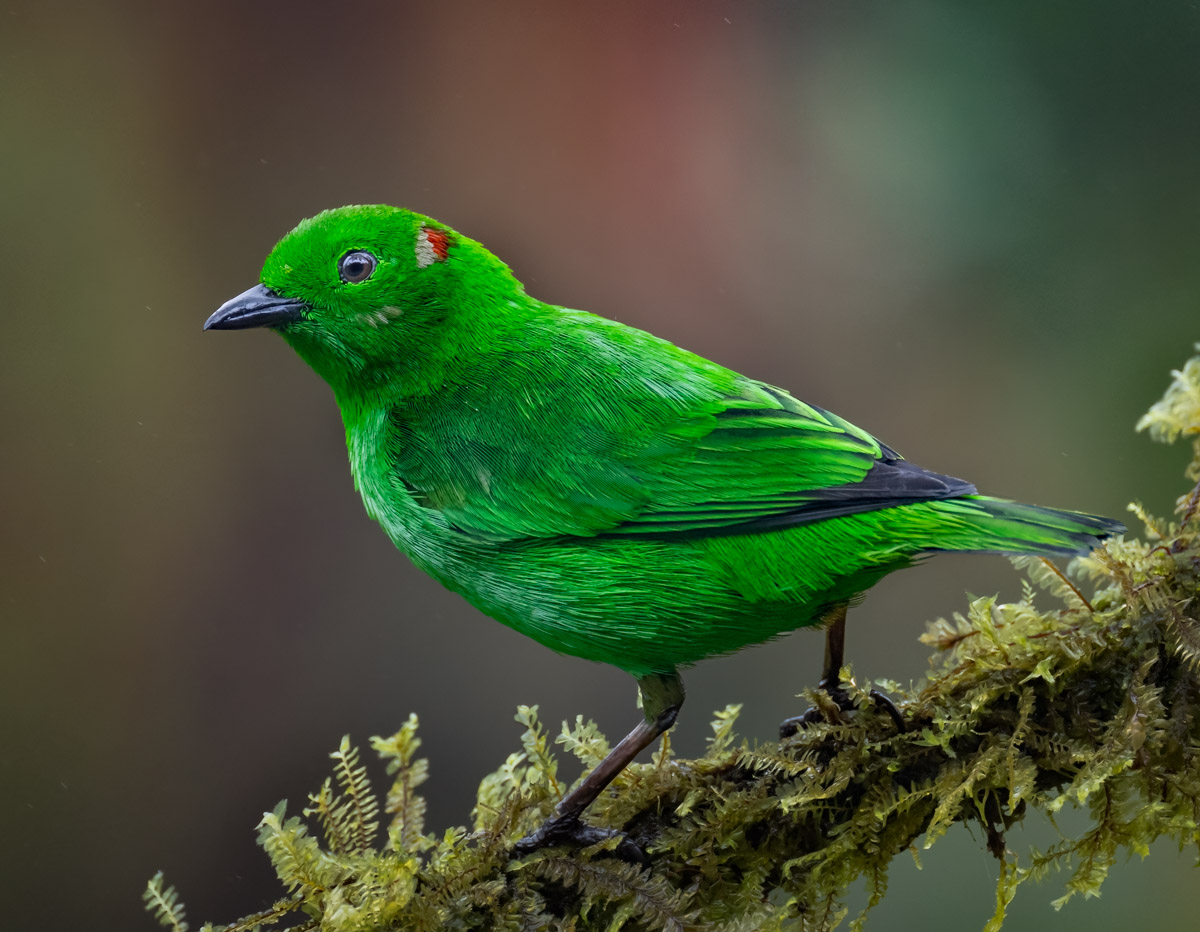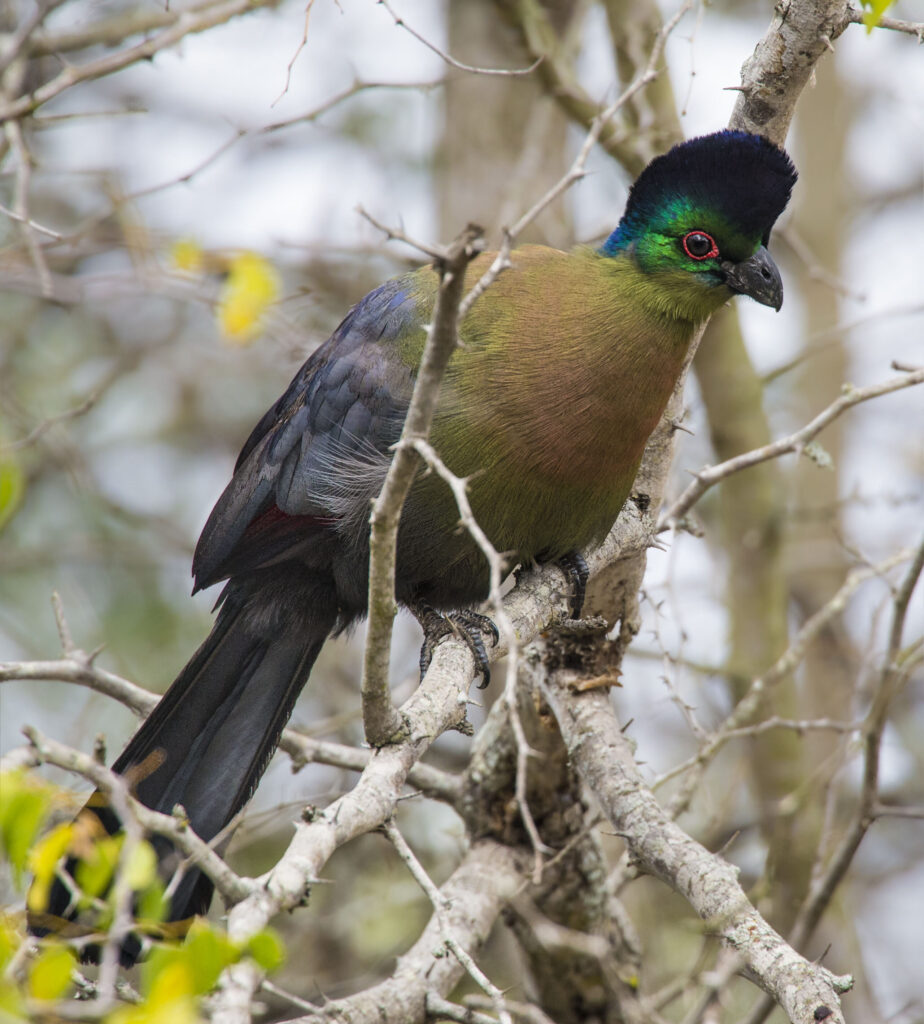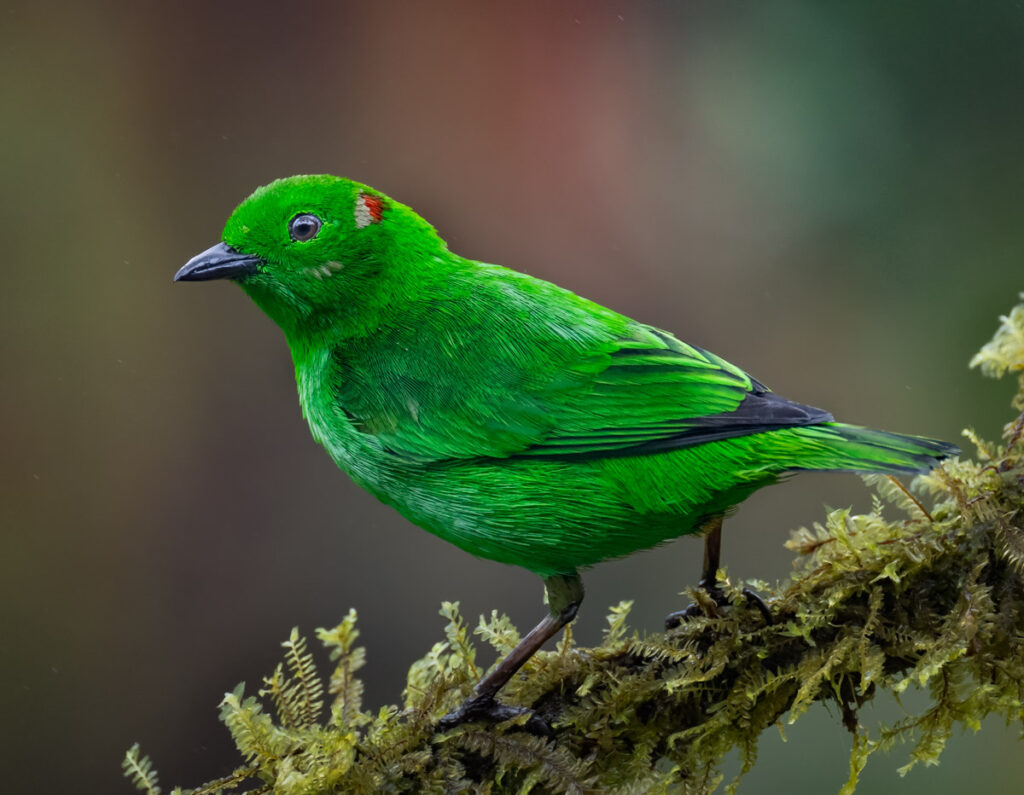
The color green has always held a captivating allure, evoking feelings of fertility, tranquillity and harmony. In the avian realm, the color green reigns supreme, seen in the plumage of thousands of bird species, not surprising given the majority of occupied habitats are among the plants of the world. In today’s blog we take a look at a few exquisite examples of how the color green manifests in birds, and how it aids in their adaptation to their unique environments.
In the realm of avian aesthetics, the coloration of feathers is primarily attributed to two factors: light interaction and pigmentation. Light interaction occurs when the intricate structure of the feathers interacts with incoming light, resulting in the reflection and absorption of certain wavelengths. On the other hand, pigmentation involves the presence of pigments, such as carotenoids and melanins, which absorb and reflect light to produce various colors.

Amazon Parrots
The genus Amazona covers those short-tailed medium-sized parrots native to the Americas, all of which are predominantly green; but what a dazzling range of greens across the thirty or so species. The feathers of these parrots contain a combination of carotenoid pigments like zeaxanthin, lutein and melanin pigments in varying concentrations that affects the level of absorption of wavelengths of light, meaning we get to see a rich spectrum of green shades. This southern mealy Amazon parrot has a whitish tinge to the nape and back, almost as if it has been dusted with flour – or meal, which is where it gets the second part of its name. The darker green and yellow fan edge to the tail helps determine it from other similar parrots in its range across tropical Central and South America.

Purple-Crested Turacos
Native to the woodlands of Sub-Saharan Africa, this species takes its name from the dominant feature, that impressive rich purple plume atop the head. These birds actually look gray-pink in some lights, and it is this factor – light – that also creates the green hue in the plumage. However, turacos are unique in the bird world as they can also create the only true green pigment seen in birds, turacoverdin, a copper-based pigment found in all birds of the family Musophagidae, of which go-away birds are also members. Purple-breasted turacos scramble in the branches of the upper canopies where there is less light, and their darker hues help disguise them as they forage for fruits, nuts and berries. Often the only clue you’re given that they are there is their characteristic “kho-kho-Kho-KHo-KHO” call that builds in intensity and ends abruptly.

Glistening Green Tanagers
These stunning emerald-green birds are endemic to the misty Andean cloud forests of west Colombia, and Ecuador, where Owen snapped a shot of this one. Similar to the purple-crested turaco, the green hues of the glistening green tanager arise from a combination of light interaction and pigmentation. The feathers of this tanager possess a unique structure that creates a shimmering effect, giving rise to the adjective “glistening” in its name, and the presence of astaxanthin contributes to the vibrancy of the plumage, enhancing its visual appeal. The females and juveniles are just a little duller and lack those red and white spots behind the eyes.
The color green is of course one of the most abundant in the natural world from the pulsing life force that is chlorophyll, so these birds with their green camouflage plumage can easily blend into their verdant surroundings, ensuring their survival in the wild. As we marvel at this splendidly enigmatic green plumage, we can gain a deeper appreciation for the interplay of nature’s palette in the avian world.


